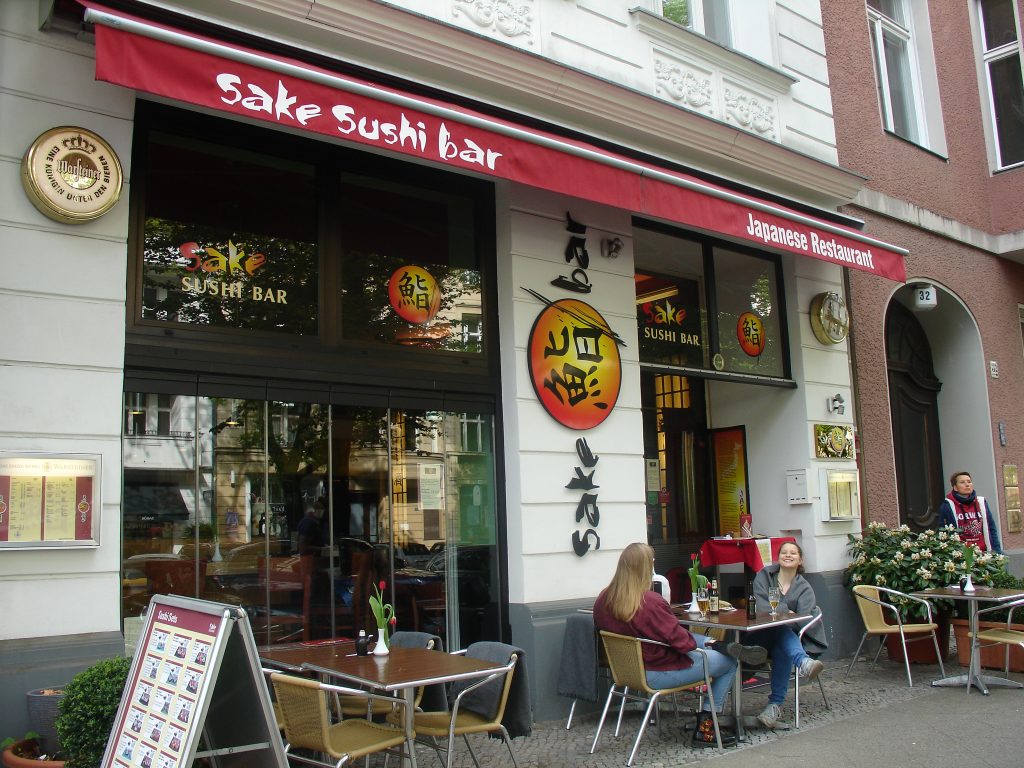by Cornelia Reiher
Berlin is experiencing an unusually hot summer right now, but there are plenty of ways to cool off. One of them is refreshment at one of the capital’s Japanese cafes and eateries. In July, I took a friend, a food journalist from the U.S., on a little tour of Berlin’s Japanese food culture. We started with iced matcha latte and matcha tiramisu at a Japanese bakery in the afternoon. A group of Japanese customers enjoyed the lazy afternoon in the shaded plaza in front of the bakery. The store had also set up a tanabata decoration. The Tanabata festival celebrates the coming together of the deities Orihime and Hikoboshi, two lovers separated by the Milky Way, in July. In modern Japan, people generally celebrate Tanabata by writing wishes, sometimes in the form of poems, on small pieces of paper (tanzaku) and hanging them on bamboo. We were surprised by the multilingual tanzaku and touched because many of them expressed the wish for peace against the background of the war in Ukraine.

Tanzaku in multiple languages hanging from an improvised wish tree in a Japanese bakery in Berlin.
Copyright © Cornelia Reiher 2022
As we sat outside talking about how much Japanese restaurants in Berlin have changed over the past two decades, my friend told me how surprised she was at the wide selection of Japanese food now available in Japanese and Asian supermarkets. I took the cue and we visited a travel agency that now sells Japanese food, sweets, spices and sake. The Japanese staff enthusiastically introduced different types of sake and even shared recipes with us, telling us about their favorite foods and their way of cooking. This conversation about sake made us want a drink, and after passing several Japanese restaurants where customers were sitting outside enjoying a cold Japanese beer, we stopped at an izakaya and ordered drinks. The menu offered not only a wide selection of alcoholic beverages from Japan, but also cocktails and a haiku by Matsuo Bashō on each page. We ordered cocktails with yuzu and shiso leaves and enjoyed the creativity of fusion cuisine.

Iced matcha latte, matcha tiramisu and yuzu collin.
Copyright © Cornelia Reiher 2022
Looking for a place to eat dinner, we passed a number of Japanese restaurants that were closed for the summer vacations. But others were also closed due to lack of staff. Many of the Japanese restaurants rely on part-time staff who come to Germany on working holiday visas and often return to Japan in the summer, so summer was a difficult time even before the pandemic. But the Covid 19 pandemic made travel more difficult and added to restaurants‘ problems finding staff. But after a short walk, we found a Japanese restaurant that was open, and we were able to not only enjoy a delicious dinner, but also end our culinary expedition with cool azuki and matcha ice cream and goma purin.

Azuki and matcha icecream and goma purin
Copyright © Cornelia Reiher 2022

























